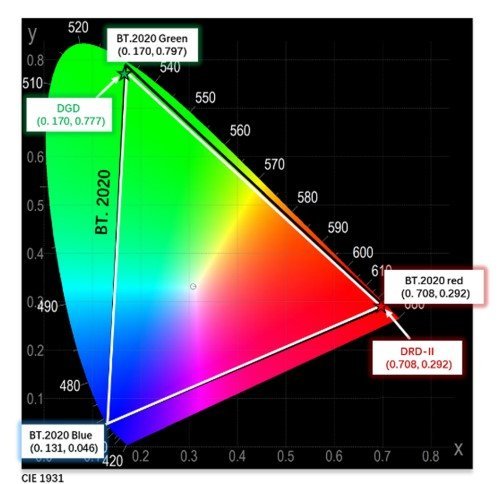High performance red and green phosphorescent emitters suitable for the BT.2020 color gamut
Wang, J, Xie, M, Pang, H, Zhang, C, Sang, M, Zhang, Q, et al.
J Soc Inf Display. 2023; 31( 6): 457– 465.
https://doi.org/10.1002/jsid.1205
This scientific article discusses the development of high-performance red and green phosphorescent emitters suitable for the BT.2020 color gamut in displays. The researchers conducted optical simulations to determine the optimal spectra for the emitters. For the green emitter, they found that a spectrum with a peak wavelength at 526 nm and a full width at half maximum (FWHM) less than 30 nm could achieve the desired color coordinates. For the red emitter, they discovered that decreasing the FWHM instead of red-shifting the spectrum was important to achieve the desired color coordinates while maintaining high current efficiency. Based on these simulation results, the researchers designed and synthesized novel deep green (DGD) and deep red phosphorescent (DRD-II) emitters. The DGD emitter achieved a color coordinate of (0.170, 0.777) with a current efficiency of 171 cd/A, and the DRD-II emitter achieved a color coordinate of (0.708, 0.292) with a current efficiency of 59 cd/A. The researchers also demonstrated that the angular dependence of these devices was comparable to those with commercial emitters. Overall, these findings suggest that phosphorescent emitters have the potential to meet the BT.2020 color standard in organic displays.
How was Setfos used?
SETFOS 5.0 was used for optical simulations to determine the optimal spectrum of a green emitter suitable for BT.2020. The simulations involved employing a series of simulated green photoluminescence (PL) spectra. Optical constants, such as the refractive index and the extinction coefficient of each emitter, were taken into account during the simulations.

